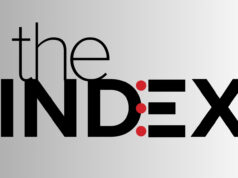
Real-time benefit tools (RTBTs) held a lot of promise, so why haven’t they captured the market?
Ostensibly, RTBTs allow physicians to access drug pricing and a patient’s benefit information at the point of care, so they’re able to prescribe the lowest cost medication and avoid awkward, painful sticker shock at the pharmacy. This technology was mandated by the 21st Century Cures Act, which passed in 2016.
Every health plan must utilize an RTBT to connect to at least one health organization, which can be anything ranging from a large health system to a single physician practice in a rural setting. But it turns out that RTBTs haven’t delivered on the promised savings for a few reasons.
First, during an office visit, the point of care is not the best place to intervene. The workflow process in a doctor’s office is rigid and sacrosanct: A patient comes into the office, completes paperwork, is called to the exam room, a nurse does the intake, the doctor or PA comes in, there’s a short conversation, the doctor/PA writes a prescription, says good-bye, and the nurse schedules a follow-up. If an intervention disrupts this workflow, then it is less likely to occur.
A physician’s time is already extremely limited, and patients are scheduled to the minute. Adding another layer of work to a clinic’s time is a disincentive to adoption. Further, the RTBT adds too many clicks. The functionality resides in the EHR, but not in the traditional workflow. Physicians must enter a new section in the e-prescribing application or EHR to research the drug costs and the member’s formulary. This requires a significant increase in time and the number of clicks, taking the physician further out of their usual process.
It was thought that RTBTs would track with the adoption of e-prescribing by physicians. This didn’t happen because the RTBT remains a clunky adjunct to the workflow and is not an integral part of the e-prescribing process. Historically, physicians adopt new tech for two reasons: It saves money, and it saves time. If it does neither, then the tech will not experience mass adoption. This is the unfortunate case for RTBTs. The tools generate no revenue, and cost more time.
To make things worse, physicians may have multiple RTBTs in their EHR. If one RTBT takes the physician beyond their normal workflow, two or more RTBTs will be like having Christmas decorations up on the Fourth of July. They’re colorful and bright but not really the right thing in the moment.
Physicians that have used an RTBT have raised serious questions about its accuracy, and that makes sense given the significant data secrecy issues. There is an intrinsic competitive problem with accessing medication cost data because of who owns the data. PBMs are highly competitive and protective of their negotiated drug costs and will not share that information with competitors. For example, Surescripts offers an RTBT, but it does not have Optum cost data because Surescripts is partially owned by Express Scripts, a major competitor of Optum.
I understand the complexity behind integrating medication costs and patient benefit data. To say it’s a challenge is an understatement. To be effective, the RTBT must offer up-to-date information from various PBMs, health plans and patient records and deliver it in real-time to the electronic health record in clinic.
To transmit accurate pricing information to physicians in real time requires integrating data from each of the various sources, comprising thousands of point-to-point digital connections. Each of these interfaces necessitates regular updating, versioning control and technical support. There is no single RTBT that can achieve this to date, which explains the accusation from physicians that the data in the RTBT is not accurate, and hence, they don’t trust it. The reality is that for the physicians, the tools create more work and offer a dubious benefit.
The RTBT is designed to prevent high prescription costs, but it fails to capture “leakage.” For example, after a patient is prescribed medication for a chronic condition, the medication rarely changes even though drug prices and member formularies change frequently. This means that the patient will likely receive refills of the same medication even if new, lower cost options become available. The RTBT does not capture cost savings in the refill space. Since leakage accounts for most cost overruns, the RTBT is limited in its overall savings potential.
RTBTs have an uphill battle because they require a tectonic shift in how PBMs, health plans, clinics and prescribers behave. Altering behavior is by far the hardest thing to do in any space, even when the benefit for the change is clear.
Before Congress enacted the Health Information Technology for Economic and Clinical Health Act (HITECH Act within the American Recovery and Reinvestment Act of 2009), physicians were slow to adopt EHRs because it interrupted their usual workflow. Congress understood the scale of the undertaking and put $19 billion behind the transition with many incentives for physicians to adopt and penalties if they failed.
The Cures Act has no carrot or stick to drive physicians to use RTBTs, and the tool will not achieve widespread adoption because of it. RTBTs are a nice idea, but they are limited by design. To achieve real savings without running headlong into a competitive battleground over pricing data and disrupting an already stressed workflow within clinics, other solutions should be considered and supported by Congress.
Within the next five to 10 years, RTBTs could experience an increase in adoption with better integration and automation into the workflow. In the current state, RTBTs could be more effective if coupled with other applications that switch drugs retrospectively. This would create a more complete solution that captures more of the leakage that gets by RTBTs.
Photo: z wei, Getty Images








